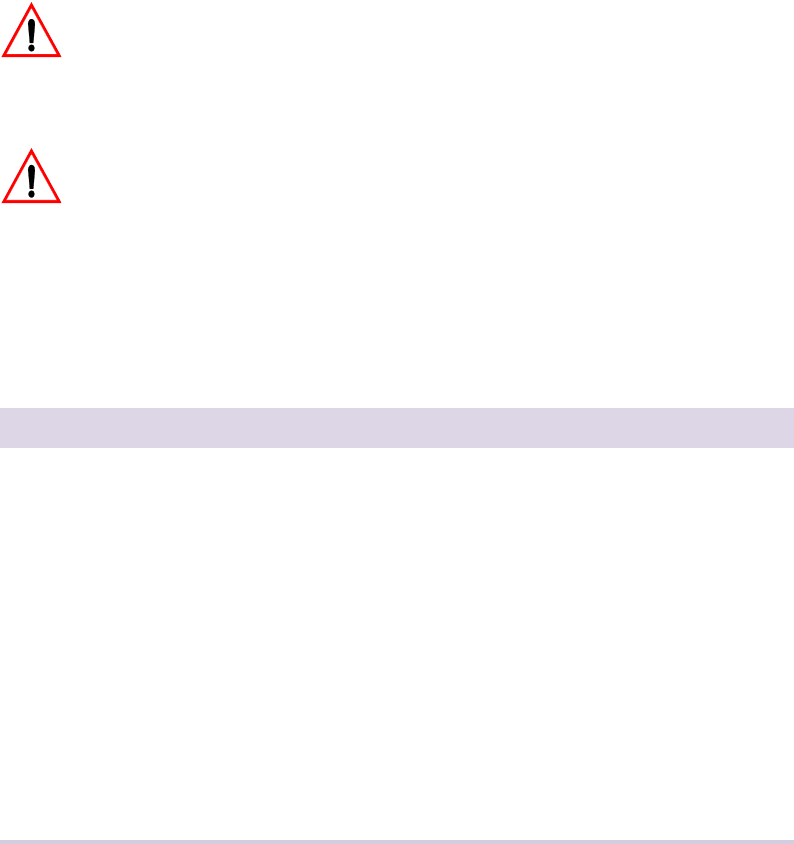User's Manual
Table Of Contents
- Important Safety Instructions
- Overview
- The ERU assembly
- Do you have everything?
- Safety precautions
- Introduction
- Installing the ERU
- Installation overview
- Installation guidelines and requirements
- Estimating cable requirements
- Assembling the mounting bracket and pipe
- Installing the ERU on solid wood or lap siding
- Installing the ERU on brick or poured concrete
- Installing the ERU on a cinder-block or hollow wall
- Installing the ERU under the eaves
- Installing the ERU on a roof
- Attaching the ERU to the mounting assembly
- Routing and grounding the exterior cables
- Routing cable to the SOMAport
- Troubleshooting

48
External Radio Unit Installation Guide
Choosing a location for the ground block
The coaxial cable from the ERU attaches to your building at the ground block.
The ground block must be located as close as is practical to the point where the
cable enters the building, preferably outside the building.
Choosing a building ground
The building ground wire must be terminated at one of the building grounds
described below. The three options (A through C) are illustrated on page 47.
NOTE:
You can use option A or B if the grounding point is within 6 m
(20 feet) of the ground block. Otherwise, use option C.
WARNING:
Do not mount the ground block directly on flammable
material, such as lap, wood, or vinyl siding. Install a heat-resistant barrier, such
as a piece of metal, between a flammable mounting surface and the ground
block. Alternatively, install the ground block on the foundation wall, below any
siding.
WARNING:
Do not mount the ground block on material that is not solid,
such as aluminum siding.
Option Termination Point Description
A Electrical service grounding rod
or raceway
Any point on the existing electrical service raceway or
grounding rod, which is typically located below the service
panel
B Electrical service panel enclosure A predrilled hole on the service panel enclosure can be used to
attach the grounding wire using a suitable listed ground lug
C Grounding rod A grounding rod that is UL-listed, copper-clad or made of non-
corrosive material. The rod must be at least 2.5-m (8-feet) tall
and 1.25 cm (0.5 inches) in diameter.
The grounding rod should be driven into the ground within
6 m (20 feet) of the ground block and must be attached to the
block with #10 AWG copper grounding wire. This rod must also
be attached (bonded) to one of the building grounds (A or B)
with a #6 AWG bond wire. A suitable, listed pressure lug must
be used.
Damp soil is preferable to dry soil and clay soil is preferable to
sandy soil. If you live in an extremely dry or desert climate,
refer to local electrical codes, which may be stricter than
national codes.










